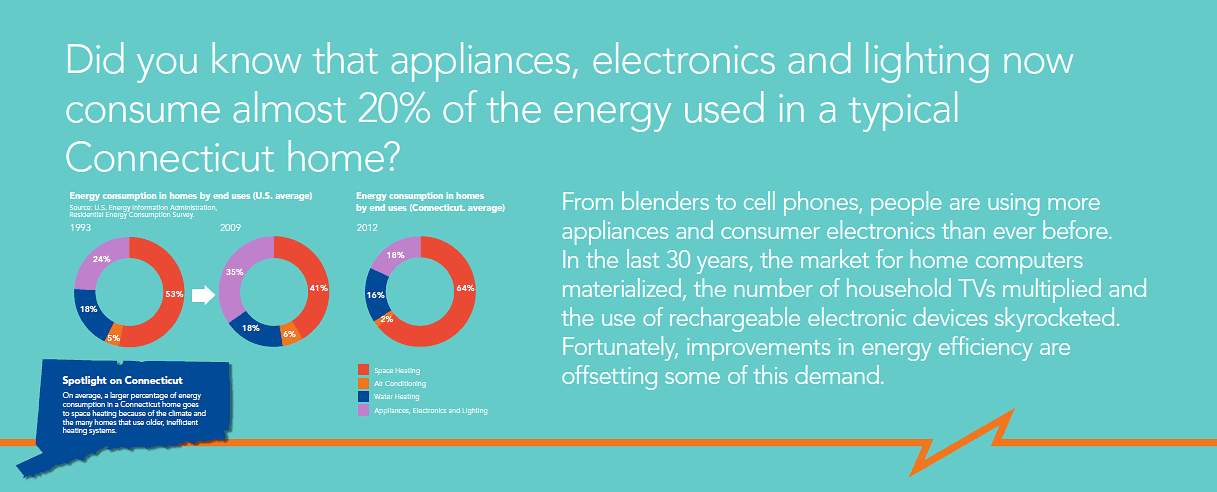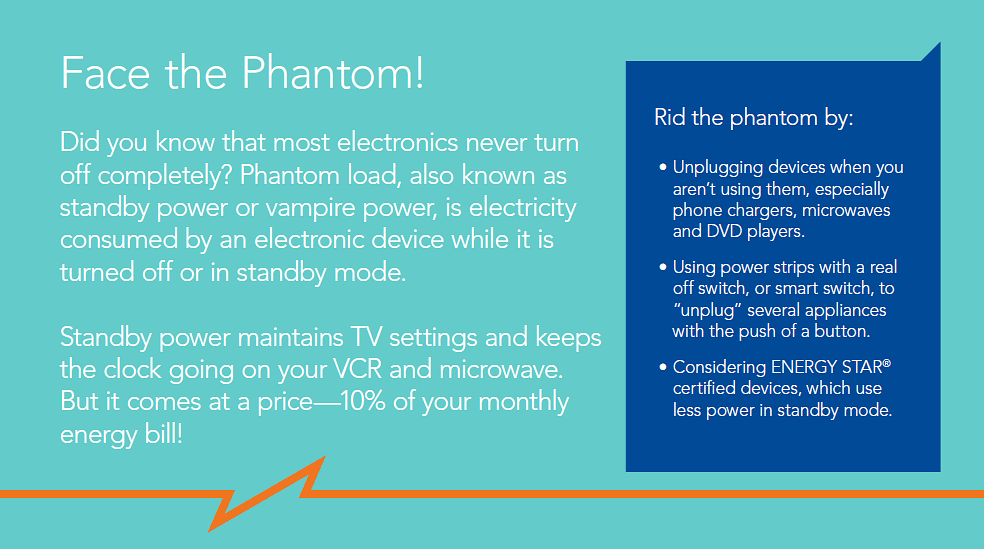-

Did you know that appliances, electronics and lighting now consume almost 20% of the energy used in a typical Connecticut home?
From blenders to cell phones, people are using more appliances and consumer electronics than ever before. In the last 30 years, the market for home computers materialized, the number of household TVs multiplied and the use of rechargeable electronic devices skyrocketed. Fortunately, improvements in energy efficiency are offsetting some of this demand.
-

Read the Label!
If you've shopped for an appliance recently, you've probably seen the bright yellow EnergyGuide labels that manufacturers are required to display on all appliances.
The label provides information about energy consumption and shows you how much energy an appliance uses compared with similar models. Keep in mind that the numbers are averages; actual costs will differ depending on how you use them and what your electric rates are.
- The manufacturer, model and size tell you exactly what product the label describes.
- The cost range helps you compare the energy use of different models by showing you the range of operating costs for models with similar features.
- Products with the ENERGY-STAR® label are independently certified to save energy without sacrificing features or functionality. Look for the ENERGY-STAR label to save money on your energy bills and help protect our environment.
- This is an estimate of how much electricity the appliance will consume in a year based on typical use.
- This is the estimated amount you would pay to run the appliance for a year, based on the national average cost of energy. The cost appears on labels for all models and brands so that you can compare energy costs as you would compare prices or other features. To better understand what your actual operating cost might be, multiply this number by the electricity rate on your utility bill.
- These are key features of the appliance and of similar models used to establish the cost range below.
Follow the Stars
Earning the ENERGY STAR means products meet strict energy efficiency guidelines set by the U.S. Environmental Protection Agency. Products that have earned the ENERGY STAR deliver exceptional features, while using less energy.
-

Face the Phantom!
Did you know that most electronics never turn off completely? Phantom load, also known as standby power or vampire power, is electricity consumed by an electronic device while it is turned off or in standby mode.
Standby power maintains TV settings and keeps the clock going on your VCR and microwave. But it comes at a price - 10% of your monthly energy bill!
Rid the phantom by:
- Unplugging devices when you aren't using them, especially phone chargers, microwaves and DVD players.
- Using power strips with a real off switch, or smart switch, to "unplug" several appliances with the push of a button.
- Considering ENERGY-STAR® certified devices, which use less power in standby mode.




